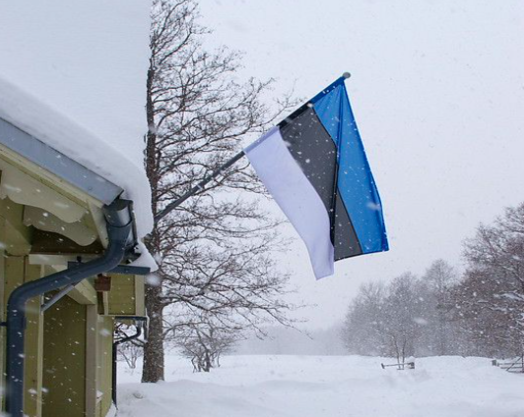Glossary Term
Cheques
Cheques
Used In: Baccarat
Introduction
In baccarat, “cheques” are the chips or tokens used to place bets during the game. Casinos use cheques instead of cash to streamline gameplay and maintain security at the table. Each cheque represents a specific monetary value, with denominations clearly marked and often color-coded for easy recognition. Players exchange cash for cheques before joining the game, simplifying the betting process and allowing for smooth transactions.
Cheques serve more than a practical purpose; they also enhance the elegance and professionalism of the game. The tactile feel of the chips, the way they are stacked and moved, and the visual appeal of their design contribute to the overall casino experience. This subtle but important aspect of baccarat reflects the game's reputation as a refined and sophisticated choice for players.
Understanding cheques is vital for any baccarat player, whether you're a beginner or seasoned gambler. Familiarity with their denominations, proper handling, and table etiquette ensures you can focus on strategy and gameplay without distractions. By mastering the use of cheques, you can confidently engage in baccarat, making the experience both enjoyable and seamless.
Overview and In Depth Look
In baccarat, cheques are the casino-issued chips that players use to place their bets. They replace physical cash at the table, offering a secure and efficient way to manage wagers. Cheques are color-coded and come in a range of denominations, allowing players to quickly and easily identify their value. Before starting a game, players exchange cash for cheques, which they use throughout their session. The use of cheques not only speeds up gameplay but also enhances the overall casino experience by maintaining a polished and organized environment.
Cheques play a central role in baccarat’s smooth operation. Each table typically has a designated area where players stack and organize their cheques during gameplay. High-value cheques, often called “plaques,” are reserved for larger bets and carry a distinctive design to emphasize their significance. Proper handling of cheques is a key part of baccarat etiquette; players must clearly place their bets in the designated betting area and avoid touching the cheques after the dealer announces “no more bets.” These conventions ensure transparency and fairness. Understanding cheque denominations, recognizing their colors, and adhering to the etiquette surrounding them are essential skills for any baccarat player looking to navigate the game with confidence and professionalism.
Mechanics
Cheques are integral to baccarat’s gameplay, serving as the medium for placing bets. Players begin by exchanging cash for cheques at the casino or table, with each cheque clearly indicating its denomination. These chips are color-coded to help distinguish their values quickly, ensuring smooth transactions during the game. Players use cheques to place bets in designated areas corresponding to the Banker, Player, or Tie outcomes. Once bets are placed, the dealer announces “no more bets,” and the cheques remain untouched until the hand concludes.
The handling and placement of cheques follow specific rules to maintain fairness and order. Players must stack their cheques neatly and avoid combining different denominations in the same pile to avoid confusion. High-value cheques, such as plaques, are treated with particular care and may require verification from the dealer or pit boss. Properly using cheques not only ensures compliance with casino protocols but also allows players to focus on their strategy and enjoy the flow of the game without disruptions.
Example
Imagine a baccarat table at a bustling casino. A player approaches with $500 in cash and exchanges it for cheques at the table. The dealer hands over cheques in various denominations: several $25 chips and a few $100 chips, each color-coded for easy identification. The player decides to bet $50 on the Player hand, stacking two $25 cheques neatly in the designated betting area. Once all players have placed their bets, the dealer announces “no more bets” and begins dealing the cards.
As the hand progresses, the Player side wins with a total of 9. The dealer pays out winnings, and the player receives their original $50 bet plus $50 in additional cheques, doubling their stack. The player organizes their cheques back into neat piles and prepares for the next round. This simple yet structured interaction illustrates how cheques streamline gameplay, maintain clarity, and help players stay engaged in the flow of baccarat.
Player Perspective
When sitting at a table, the first step is exchanging cash for cheques, which are used to place bets on the Banker, Player, or Tie. Players quickly learn to recognize the various denominations, as cheques are color-coded for ease of use. The physical act of placing cheques in the betting area feels straightforward, and knowing the value of each cheque helps players manage their bankroll throughout the session. The smooth exchange of cheques ensures that the betting process remains efficient and focused on the game.
During gameplay, players are required to adhere to specific etiquette regarding their cheques. They must place them in the appropriate betting areas before the dealer calls “no more bets.” Afterward, players are not allowed to touch their cheques until the hand concludes. This rule prevents any confusion or suspicion of tampering with the outcome. Players also need to be mindful of how they organize their cheques, particularly when handling higher-value ones like plaques. Stacking cheques neatly ensures that the dealer can easily verify the bet amounts, keeping the game moving seamlessly.
As the hand unfolds, players watch the action unfold while maintaining focus on their cheques. Winning or losing a bet has direct consequences on their stack of cheques, and payouts are made accordingly. If a player wins, they receive additional cheques, which are stacked alongside their original bet. Managing these cheques throughout the game requires careful attention to avoid confusion, particularly if a player accumulates a large number. For players, understanding the role of cheques in baccarat is key to ensuring they can enjoy the game and manage their bets effectively.
Conclusion
Cheques are a fundamental part of the baccarat experience, providing a secure and organized method for placing bets. Their use streamlines gameplay, helping players focus on the strategy and excitement of the game without worrying about cash transactions. By understanding the denominations, handling etiquette, and the rules surrounding cheques, players can engage with the game more confidently and efficiently.
Mastering the use of cheques not only enhances a player’s understanding of baccarat but also contributes to a smoother, more professional gaming environment. Whether you’re a beginner or an experienced player, knowing how to manage and place your bets with cheques ensures a seamless experience. In the end, their role in baccarat is not just practical but also enhances the enjoyment and flow of the game, allowing players to focus on the thrill of competition.
The Top Online Casinos for Playing Baccarat
The top online casinos for playing baccarat offer a combination of reliability, variety, and accessibility. With sleek interfaces, seamless gameplay, and generous bonuses, these casinos provide an immersive and enjoyable environment for baccarat enthusiasts.


Author
Branimir Ivanov | Senior News Contributor









